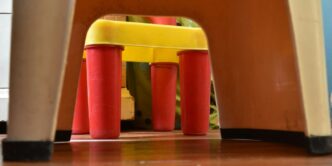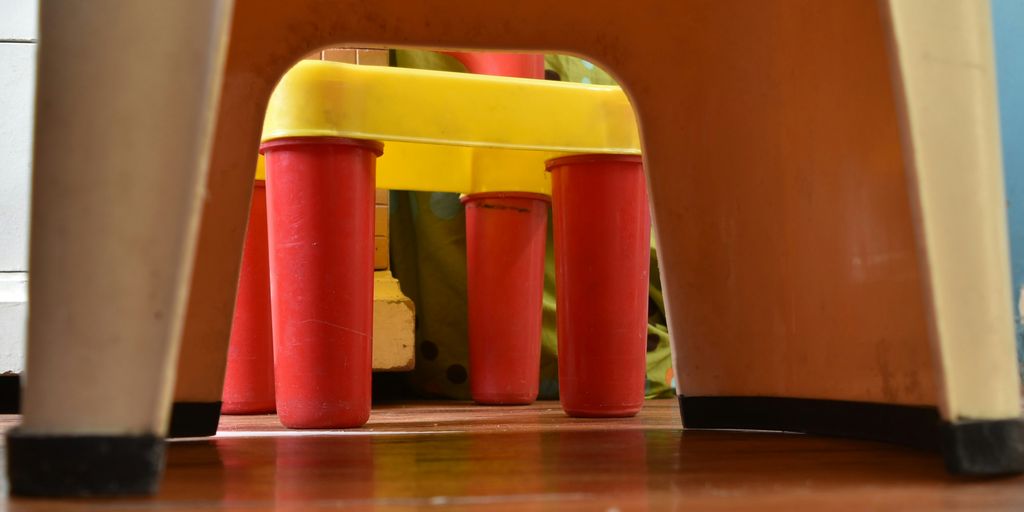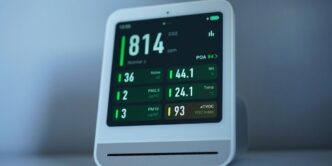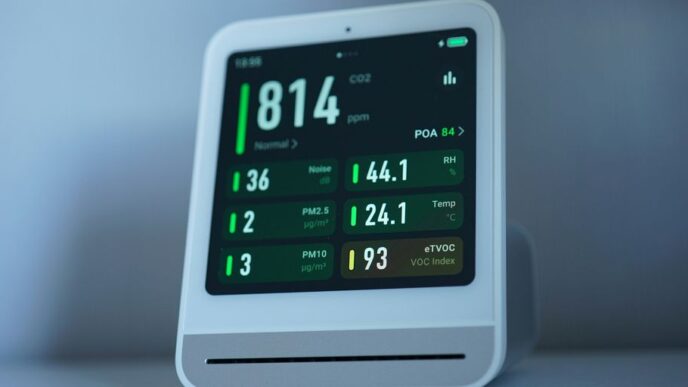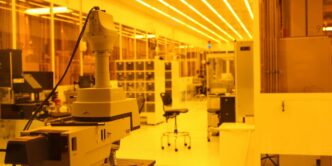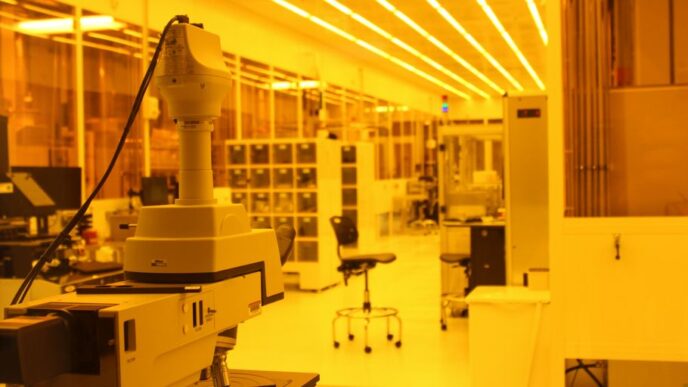3D printing in healthcare is really changing things, making medical stuff easier to get and more affordable. It’s cool how industrial 3D printers, along with strong materials and simple software, are making medical device creation much simpler. This means hospitals can print devices themselves, or they can use local manufacturers. It’s all about making things better for patients and speeding up service. This article will give you a quick look at how 3D printing is used in medicine and how it’s going to change the medical world as more people start using it.
Key Takeaways
- 3D printing helps make medical devices faster and more custom-made.
- It’s changing how prosthetics and implants are made, making them fit patients better.
- This technology can cut down on surgery time and help patients recover quicker.
- There are different 3D printing methods, like stereolithography and binder jet printing, used in medicine.
- 3D printing is also becoming a big part of medical training and research, even helping with things like organ printing for the future.
Revolutionizing Medical Innovation with 3D Printing
3D printing is changing the game in medicine, making innovation more accessible and cheaper. It’s not just about fancy gadgets; it’s about speeding up how we develop and produce medical devices. Think faster turnaround times and more personalized solutions. It’s becoming more commonplace. Wearable technology is also helping to improve patient outcomes.
Accelerating Medical Device Development
3D printing lets researchers and developers bring ideas to life faster than ever before. Traditional methods can be slow and expensive, but with 3D printing, you can quickly prototype, test, and refine designs. This means new medical devices can get to patients sooner. It’s a total shift in how things are done. The workflow, from idea to production, is faster and simpler.
Streamlining Custom Medical Device Production
One of the coolest things about 3D printing is how easily it allows for customization. Need a device tailored to a specific patient’s anatomy? No problem. 3D printing makes it cost-effective to create custom implants, prosthetics, and surgical tools. This level of personalization can lead to better outcomes and improved patient care. Here’s a quick look at the benefits:
- Improved fit and function
- Reduced surgery times
- Faster recovery
In-House Versus Outsourced 3D Printing
Medical facilities now have a choice: bring 3D printing in-house or outsource to a trusted manufacturer. In-house printing gives you more control and faster turnaround times, which is great for urgent needs. Outsourcing can be a good option if you don’t want to invest in equipment and training. Either way, 3D printing is becoming a key part of the medical supply chain. Manufacturers could open multiple manufacturing locations on hospital grounds, which required a smaller footprint than regular factories and required fewer employees. Moreover, ordering a custom implant could be as easy as having it designed in the headquarters and then printed remotely in the hospital that ordered it.
Transformative Applications of 3D Printing in Healthcare
3D printing is really changing things in healthcare. It’s not just a cool tech demo anymore; it’s actually being used to make a real difference in patient care and medical procedures. From creating custom implants to helping surgeons plan complex operations, the possibilities seem endless. It’s exciting to see how this technology is evolving and becoming more integrated into everyday medical practice. Let’s take a look at some specific areas where 3D printing is making waves.
Advancements in Prosthetics and Orthotics
3D printing is revolutionizing the creation of prosthetics and orthotics. Instead of relying on standard sizes and shapes, devices can now be tailored to fit each patient perfectly. This leads to improved comfort, functionality, and overall patient satisfaction. Plus, the ability to quickly produce these custom devices means patients can get the support they need much faster. It’s a game-changer for people who rely on these devices to live their lives to the fullest.
- Enhanced customization for a perfect fit
- Faster production times
- Potential for lower costs compared to traditional methods
Patient-Specific Surgical Guides and Implants
One of the coolest applications of 3D printing is the creation of surgical guides and implants that are designed specifically for each patient. Surgeons can use these guides to perform more precise and less invasive procedures, which can lead to better outcomes and faster recovery times. And when it comes to implants, the ability to create custom shapes and sizes means a better fit and reduced risk of complications. It’s like having a tailor-made solution for every patient’s unique needs. Orthopedic surgeons are using 3D printing for bone repair.
Customized Medical Devices for Enhanced Care
Beyond prosthetics and implants, 3D printing is also being used to create a wide range of other customized medical devices. This includes things like hearing aids, dental implants, and even specialized tools for specific surgical procedures. The ability to create these devices on demand means that healthcare providers can offer more personalized and effective care to their patients. It’s all about finding the right solution for each individual, and 3D printing is making that easier than ever before. The technology allows for customized wound dressings and tissue printing.
Impact of 3D Printing on Patient Outcomes
Reducing Surgical Times and Complications
Okay, so, 3D printing is really changing things in the operating room. One of the biggest impacts is how it’s helping to cut down on surgery times. Think about it: surgeons can use 3D-printed models to plan out complex procedures beforehand. This means less time spent figuring things out during the actual surgery, which is great for the patient. Plus, with more precise tools and implants, there’s less risk of things going wrong. It’s not perfect, but it’s a definite step up. For example, using orthopedic implant design can significantly improve surgical accuracy.
Expediting Patient Recovery and Improving Outcomes
I’ve been reading a lot about how 3D printing is speeding up recovery times. It makes sense, right? If a surgeon can use a custom-made implant that fits perfectly, the patient’s body is going to accept it better. This leads to faster healing and fewer complications. I saw one study where patients with 3D-printed prosthetics were back on their feet way sooner than those with traditional ones. It’s pretty amazing when you think about it. It’s not just about getting better faster, it’s about getting back to your life. Here’s a quick look at some potential improvements:
- Reduced pain
- Improved mobility
- Shorter hospital stays
Achieving Same-Day Device Production
Imagine walking into a doctor’s office and walking out the same day with a custom-made device. That’s the promise of 3D printing. It’s still a ways off for some things, but for certain applications, it’s becoming a reality. Think about things like casts or braces. Instead of waiting days or weeks, a doctor could scan your injury, design a device, and print it right there in the office. It’s all about making healthcare more convenient and accessible. It’s also about cutting down on waste, since you’re only printing what you need. It’s a win-win, really.
Key 3D Printing Technologies in Medicine
3D printing’s impact on medicine is huge, but it’s important to understand the tech that makes it all possible. There are a few key technologies that are really driving innovation in this space. Let’s take a look at some of them.
Stereolithography and Digital Light Processing
Stereolithography (SLA) was one of the earliest 3D printing methods, and it’s still relevant today. It uses a laser to cure liquid resin, building up layers to create a solid object. Digital Light Processing (DLP) is similar, but instead of a laser, it uses a projector to cure an entire layer at once. This can speed up the printing process significantly. Both are great for high-resolution parts, making them useful for things like creating detailed anatomical models. It’s pretty cool how far custom prosthetics have come using these technologies.
Binder Jet Printing for Diverse Materials
Binder jet printing is interesting because it can work with a wide range of materials, including metals, ceramics, and even sand. It works by depositing a liquid binder onto a powder bed, layer by layer. This allows for the creation of complex shapes and internal structures. It’s especially useful for creating things like custom implants or even drug delivery devices. The versatility of binder jet printing makes it a key player in medical 3D printing.
Continuous Liquid Interface Production
Continuous Liquid Interface Production (CLIP) is a newer technology that’s gaining traction. It uses a pool of liquid resin and carefully controls light and oxygen to create parts continuously. This results in very smooth surfaces and can be much faster than traditional SLA or DLP. CLIP is particularly promising for creating complex medical devices and implants where surface finish is critical. It’s amazing to see the progress towards bioprinting organs using this kind of technology. This tech is really pushing the boundaries of what’s possible in 3D printing!
Expanding Horizons: 3D Printing in Medical Education and Research

3D printing is changing how we learn about medicine and conduct research. It’s not just about making things; it’s about opening up new possibilities for training and discovery. Let’s take a look at how this tech is making waves.
Enhancing Medical Training with 3D Models
Remember the days of dusty textbooks and confusing diagrams? Well, 3D printing is changing that. Now, medical students can get hands-on experience with realistic anatomical models. These models offer a tangible way to understand complex structures, making learning more engaging and effective. One study showed that students using 3D printed models had better learning satisfaction and accuracy compared to those using traditional methods. 3D printing technology is becoming more commonplace in medical schools.
- Improved understanding of anatomy
- Increased student engagement
- Better preparation for real-world scenarios
Preoperative Planning and Surgical Simulation
Imagine being able to practice a surgery before even stepping into the operating room. That’s the power of 3D printing. Surgeons can now use patient-specific models to plan complex procedures, identify potential challenges, and even simulate the surgery beforehand. This leads to reduced surgical times and improved patient outcomes. It’s like having a dress rehearsal for surgery!
- Reduced surgical time
- Improved precision
- Better patient outcomes
Advancing Pharmaceutical and Tissue Engineering Research
3D printing isn’t just for making models; it’s also pushing the boundaries of pharmaceutical and tissue engineering research. Scientists are using 3D printing to create complex drug delivery systems, fabricate scaffolds for tissue regeneration, and even bioprint functional tissues and organs. The possibilities are endless, and the potential impact on healthcare is huge. The future of medical 3D printing is bright.
- Development of personalized drug delivery systems
- Creation of tissue scaffolds for regeneration
- Bioprinting of functional tissues and organs
3D Printing’s Role in Medical Equipment and Supply Chains
Overcoming Supply Shortages with Additive Manufacturing
The COVID-19 pandemic really showed how important 3D printing could be. When global supply chains were a mess, 3D printing stepped up to fill the gaps. Things like personal protective equipment and airway consumables were made using additive manufacturing when they were hard to get through normal channels. It wasn’t just big companies doing it either; smaller outfits and even individuals were able to produce needed supplies, which was pretty cool.
Enabling Cost-Efficient Equipment Modification
3D printing isn’t just for making new stuff; it’s also great for tweaking existing equipment. Medical pros can use it to make changes and improvements that fit their specific needs. This means more personalized and cost-effective solutions. Think about it: instead of waiting for a manufacturer to make a special part, a doctor can just print it themselves. That’s a game-changer. Plus, it lets people come up with new ideas and push medical innovation forward. Here’s a quick look at how 3D printing compares to traditional methods:
| Feature | Traditional Manufacturing | 3D Printing |
|---|---|---|
| Customization | Limited | High |
| Cost for small runs | High | Lower |
| Lead time | Long | Short |
| Material Waste | High | Lower |
Fostering Innovation Among Medical Professionals
Making 3D printing more common means more people can play around with it and come up with new stuff. Doctors, nurses, and even researchers can create prototypes and test out ideas without needing a ton of money or resources. This is especially useful for things like surgical instruments and implants, where getting the design just right is super important. It’s like giving medical pros a whole new set of tools to improve patient care. For example, 3D-printed models help with:
- Training new surgeons
- Planning complex surgeries
- Developing custom implants
Future Directions and Challenges in Medical 3D Printing
Progress Towards 3D Printed Organs for Transplant
The holy grail of medical 3D printing? Functional, transplantable organs. We’re not quite there yet, but research is charging ahead. The idea is that one day, instead of waiting on a donor list, patients could receive 3D printed organs made from their own cells, eliminating the risk of rejection. However, replicating the complex architecture and cellular interactions of real organs is a massive challenge. Think about it – you’re not just printing a shape; you’re printing a living, breathing system. It’s going to take a while, but the potential payoff is huge.
Personalized Medicine and Drug Delivery Systems
Imagine a future where your medications are tailored specifically to your genetic makeup and health profile. 3D printing could make that a reality. We’re talking about printing pills with custom dosages, release rates, and combinations of drugs. This could revolutionize how we treat diseases, making treatments more effective and reducing side effects. Plus, 3D printed implants could deliver drugs directly to the affected area, maximizing their impact. It’s a brave new world of personalized healthcare.
Improving Material Range and Printing Efficiency
Right now, the range of materials we can use for medical 3D printing is limited. We need more biocompatible materials that can mimic the properties of human tissues. And let’s be honest, printing speeds need to improve. No one wants to wait days for a custom implant. Faster printing and a wider range of materials will open up even more possibilities for medical 3D printing applications. It’s all about pushing the boundaries of what’s possible.
Here’s a quick look at some key areas for improvement:
- Biocompatibility: Developing materials that the body accepts without rejection.
- Resolution: Improving the precision of printers to create intricate structures.
- Scalability: Making the printing process faster and more cost-effective for mass production.
Conclusion
So, what’s the big takeaway here? 3D printing is really changing things in medicine, and it’s doing it fast. We’re talking about everything from making custom body parts to helping doctors practice tricky surgeries. It’s pretty wild to think about how far we’ve come. Sure, there are still some bumps in the road, like making sure these printed things are super safe and figuring out how to make them even faster. But honestly, the future looks bright. This technology is only going to get better, and it’s going to keep making a huge difference in how we take care of people. It’s an exciting time to be alive, especially if you need a new knee or something!
Frequently Asked Questions
How does 3D printing help in medicine?
3D printing helps doctors and researchers by making custom medical tools, body parts, and even organs. It speeds up how fast new medical devices are made and can create things that fit each patient perfectly.
What kinds of medical things can be 3D printed?
It can make body parts like prosthetics and implants that fit a patient’s body exactly. It also helps create tools for surgery that are made for a specific operation.
How does 3D printing make patients better?
Using 3D printing can lead to shorter surgeries, fewer problems, and quicker recovery times for patients. It means treatments can be made just for them.
What are the main types of 3D printing used in medicine?
Some common types are Stereolithography (SLA), Digital Light Processing (DLP), Binder Jet Printing, and Continuous Liquid Interface Production (CLIP). Each works a bit differently to build objects layer by layer.
Is 3D printing used for teaching and research in medicine?
Yes, 3D printing is used to make models for medical students to practice on and for doctors to plan complicated surgeries. It also helps in research for new medicines and creating tissues.
How does 3D printing affect medical supplies and equipment?
3D printing can help make medical supplies and equipment when there are shortages. It also lets doctors and hospitals create or change tools easily, which helps new ideas come to life.

